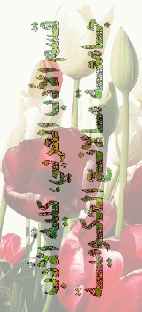|
ISSN: 0854-8277
Tahun 32, Nomor 1, Februari 2004
Abstract: Listening proficiency is a necessary requirement for understanding lectures delivered in Arabic; but not all learners
of Arabic as a foreign language have good listening skill. The present research is aims at finding out the difficulties encountered
by students, covering both linguistic and non-linguistic factors Using a qualitative design, the research is conducted at
the Arabic Department, Faculty of Letter, State University of Malang. The data are collected by means of questionnaire, observation,
interview, and documentation. The research findings reveal that textual difficulties include problems of recalling details
and order of information in the text; the linguistic problem is mostly due to lack of vocabulary; and the non-linguistic problems
are due to low motivation and interest.
ISSN: 0854-8277
Tahun 32, Nomor 2, Agustus 2004
Penggunaan Gaya Bahasa Perbandingan dalam Ayat-ayat
Al-Qur'an tentang Hari Kiamat (Hanik Mahliatussikah)
Abstract: This research aims at finding out the types of metaphorical styles and phonological aesthetics
in the Qur'anic verses dealing with the doomsday. This research uses a qualitative design using the approach of discourse
analysis and structural semiotics. The metaphorical syles found in the verses dealing with the doomsday include open similes,
implicit metaphors. personification. and narrow-sense metaphors. The phonological aesthetics comprises regular rhythm, assonance.
and consonance supporting the semantics and the end rhymes suggesting beautiful orchestration of the verses.
Karakteristik Puisi Arab
Baru dari Segi Bentuk (Mabna) (Ahmad Fuad Effendy)
Abstract: Arabic poetry whose long history dates back to one and a half centuries
before the rise of Islam did not undergo significant transformation until the twentieth century. The transfornnation causes
dramatic changes in the aesthetic paradigm, which in traditional poetry was limited to wazan (rhythmical patterns) and monotonous
qafyah (rhyme at the end of every couplet). The changes in new Arabic poetry include the following aspects: (a) the change
in poetic frame from a couplet into lines and then into sentences; (b) the change in wazan or basic rhythmical patterns from
bahr into tafilah, opening up the possibility for greater variation for aesthetic expressions; (c) greater attention given
to two types of wazan, i.e., metrical patterns and rhythm, (d) redefinition of qafyah, yielding variations known as mutarawihah,
mutawaliayah, and hurrah; and (e) the use of ramz or symbols as new models for poetic expressions.
|
